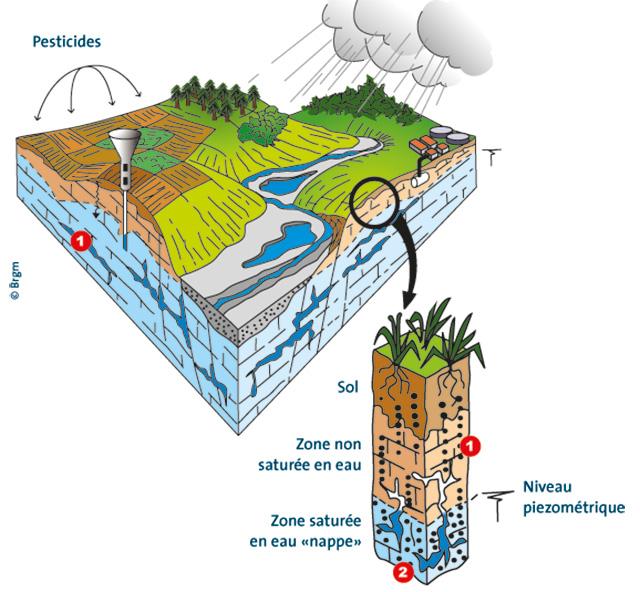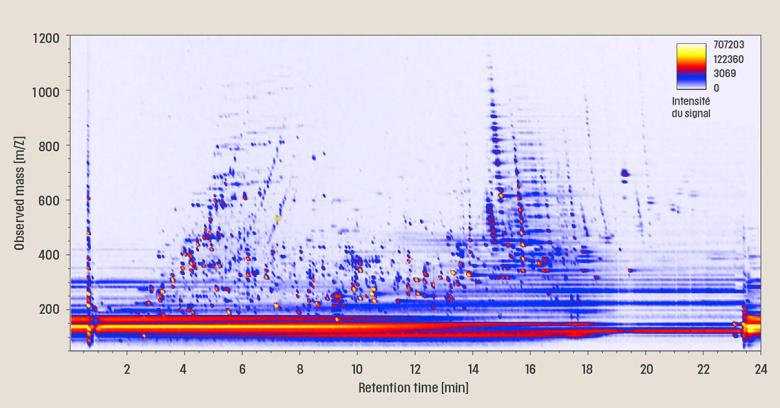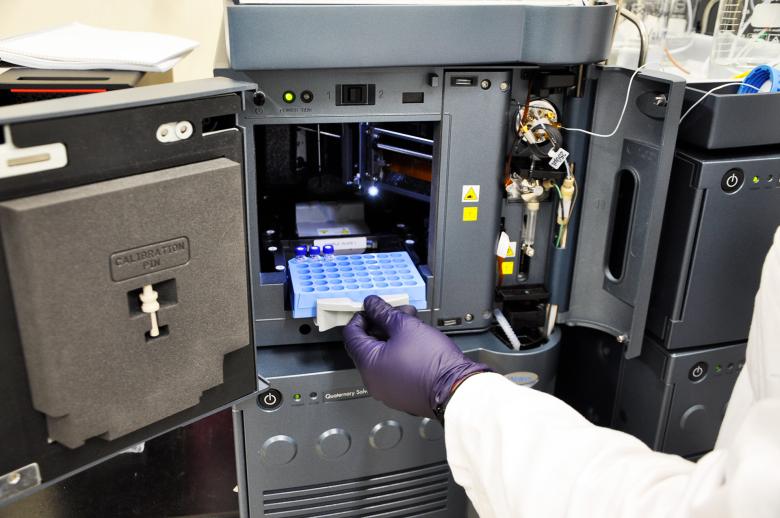
Explanatory diagram of the potential transfer of plant protection products and their metabolites from soil to groundwater.
© BRGM
The expertise of BRGM’s scientific teams, ranging from analysis to understanding the behaviour of groundwater pollutants of emerging interest, enables them to detect and characterise molecules for which little research has been done up to now. BRGM has long been developing and deploying analytical methods in the search for new compounds in water.
BRGM does advanced research on emerging pollutants
There is a lot at stake. Two examples of contaminants that can reach groundwater are metabolites (or breakdown molecules) of plant protection products and secondly Bisphenol A, a plasticizer used in food packaging (food packaging plastics, cans and tins). The latter is classified as an endocrine disruptor, with adverse effects on the reproductive function, which has led to it being banned in France.
The study of this type of pollutant is of major interest for guiding public policies, particularly in terms of the environment and health. It is necessary to detect them and trace their origins via field campaigns. BRGM is addressing this issue in two research projects.

3D chromatogram of a groundwater sample analysed by liquid chromatography coupled to high resolution mass spectrometry. Each coloured dot is an entity (mass and retention time associated with a signal intensity) that corresponds to a natural or anthropogenic molecule.
© BRGM - C. Soulier
ACCES: a new analytical approach to assess the occurrence of metabolites of plant protection products
In France, there are about 350 active substances used in plant protection products. Most of them can lead to the formation of metabolites, some of which could migrate to groundwater. To verify this, BRGM, together with the Dordogne Chamber of Agriculture, the Orleans Institute of Organic and Analytical Chemistry and the Syndicat mixte des eaux de la Dordogne, is implementing an innovative analytical approach: high-resolution mass spectrometry, which can determine whether or not there are metabolites present and if so, characterise them. The ACCES project, which will end in mid-2022, will establish the potential of this new analytical approach and provide some answers about the occurrence of certain metabolites in groundwater.

The mass spectrometer is used to analyse samples for metabolites of plant protection substances.
© BRGM - C. Boucley
BEMOL studies the presence and impact of bisphenols
The BEMOL project, led by INRAE in association with BRGM and the University teaching hospital (CHU) of Tours, was completed in 2021, with a follow-up already underway. It is investigating bisphenols, particularly Bisphenol A (BPA), which is known to be an endocrine disruptor and harmful to the reproductive function of animals and humans. These compounds, including Bisphenol S (BPS), are used as substitutes for BPA: it is therefore important to study their presence in the environment, as well as the extent to which people are exposed and affected by them, given that the initial data obtained by the project partners point to similar effects for BPA and BPS.
In practical terms, BEMOL assesses the environmental exposure to bisphenols in the six departments of the Centre-Val de Loire region and their possible effects. What is the degree of environmental contamination of water with bisphenols? What levels of exposure lead to reproductive effects? How can BPS affect reproduction? What are the interactions with the metabolic status of individuals? Tests are carried out in-vitro and on a sheep model.
Thanks to the analytical developments and measurement campaigns carried out, bisphenols (mainly A and S) have been identified in the region for the first time. The effects of BPS relate to the alteration of hormone production of ovarian cells. It also changes the quality of the oocyte in ewes. The trials have also shown that indirect routes of exposure to bisphenols via the environment may affect fertility.







